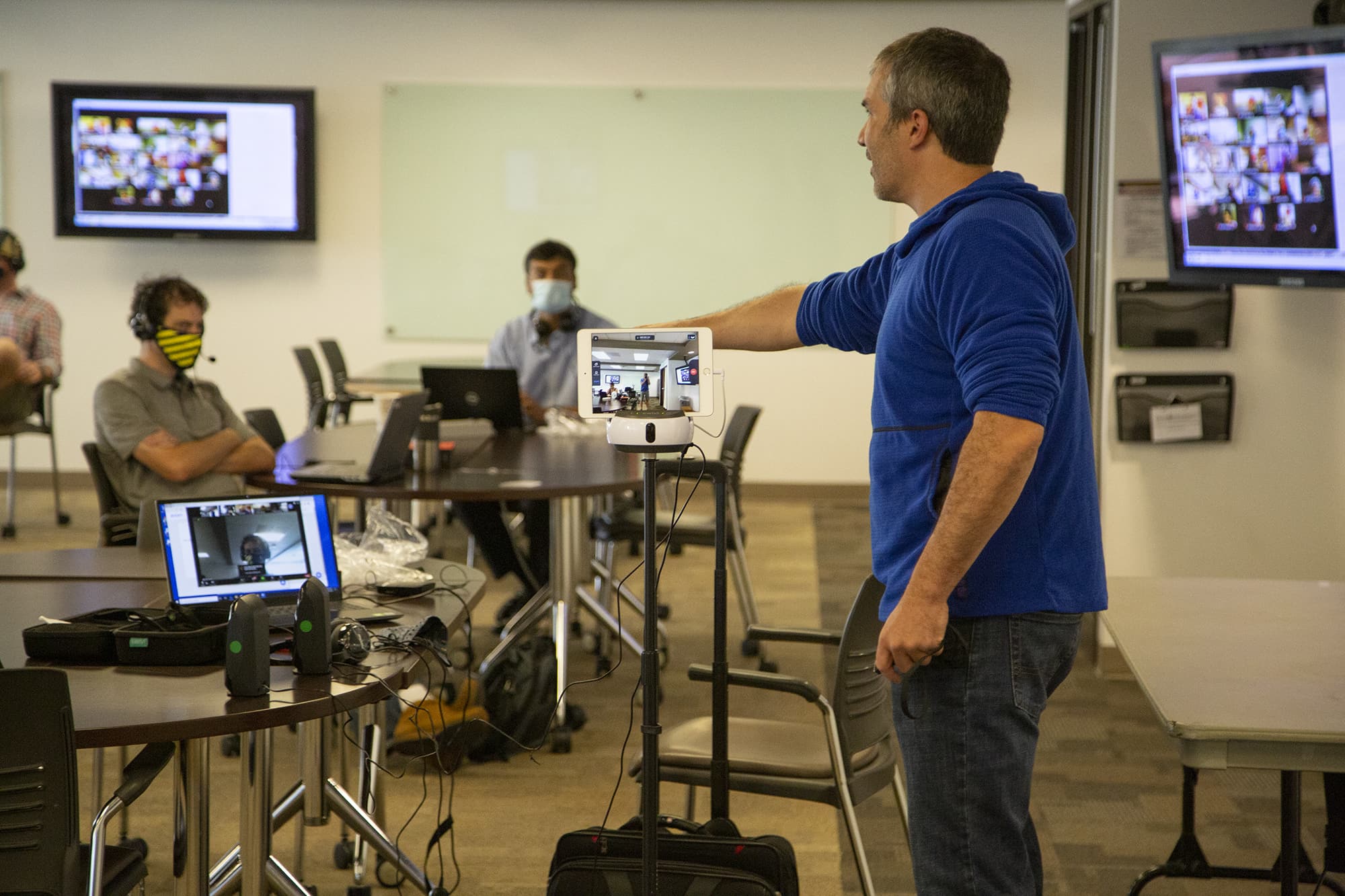Swivl technology revolutionizes Regis’ blended learning
Devices allow teachers to engage students online, in classrooms at the same time
Meet Swivl — Regis University’s new colleague in the age of COVID-19.
As part of the University’s efforts to prepare for hybrid and blended teaching formats this fall, faculty members will have access to cutting-edge technology kits that help students follow class sessions in person or via Zoom.
What’s the main point of the kits?
Featuring a mini iPad connected to a rotating console, Swivl’s mobile audiovisual kit allows professors to teach via Zoom and interact with students in the classroom while staying within the view of the iPad’s camera. The Swivl rotates the iPad up to 360 degrees to follow the faculty member, who wears a microphone synced to the Swivl. If preferred, the Swivl device also may be directed to stay focused on one area.
The kits also include additional microphones that connect to the Swivl platform. These microphones allow students in the classroom to be heard easily by students attending via Zoom.
On the heels of a highly successful transition to online teaching and learning in the spring, the University seeks to make virtual classes as effective and engaging as those attended in person.

What’s in the kits?
- Tripod and Swivl robot, which spins to follow a faculty member’s microphone
- iPad mini, which connects to Zoom and the Swivl app, provides the camera
- Dell laptop computer, which allows faculty to share and project PowerPoint presentations and other class materials
- Three microphones, including a faculty microphone and two others to pick up questions and discussion from students in the classroom
If professors prefer to use their own devices, Swivl works using a variety of devices, including iPhones and Androids.
“These kits support active learning, because the faculty member can move around the classroom and engage with the students in the classroom and via Zoom,” IDT Director Heidi Blair said.
Why are these so important to blended and hybrid learning?
On the heels of a highly successful transition to online teaching and learning in the spring, the University seeks to make virtual classes as effective and engaging as those students attend in person.
Kari Goerke, director of the RN-BSN and M.S. in Leadership programs for the Loretto Heights School of Nursing, has been using Swivl in her courses as an associate professor since January 2019. She notes the importance of Swivl for allowing students online and on Zoom to talk to each other.
“The Swivl simulates a live experience through synchronous methods, using the Zoom technology and the Swivl as a camera, to be able to see each other and hear each other,” Goerke said.
Thanks to Swivl, Instructional Design and Technology Director Heidi Blair says, faculty can engage students as they would in a normal classroom.
“These kits support active learning, because the faculty member can move around the classroom and engage with the students in the classroom and via Zoom,” Blair said. “That’s the critical component — it joins the two environments together in a more natural way that we couldn’t do otherwise in our current classroom configuration, and it does so in an affordable manner.”
Who will be using the kits?
The 81 kits will be distributed across the University based on the specific needs of each college and school, and are shared among faculty.
Instructional Design and Technology is hosting hands-on training sessions for faculty — not only on how to use the Swivl kits, but also on how to use the technology most effectively to engage students.